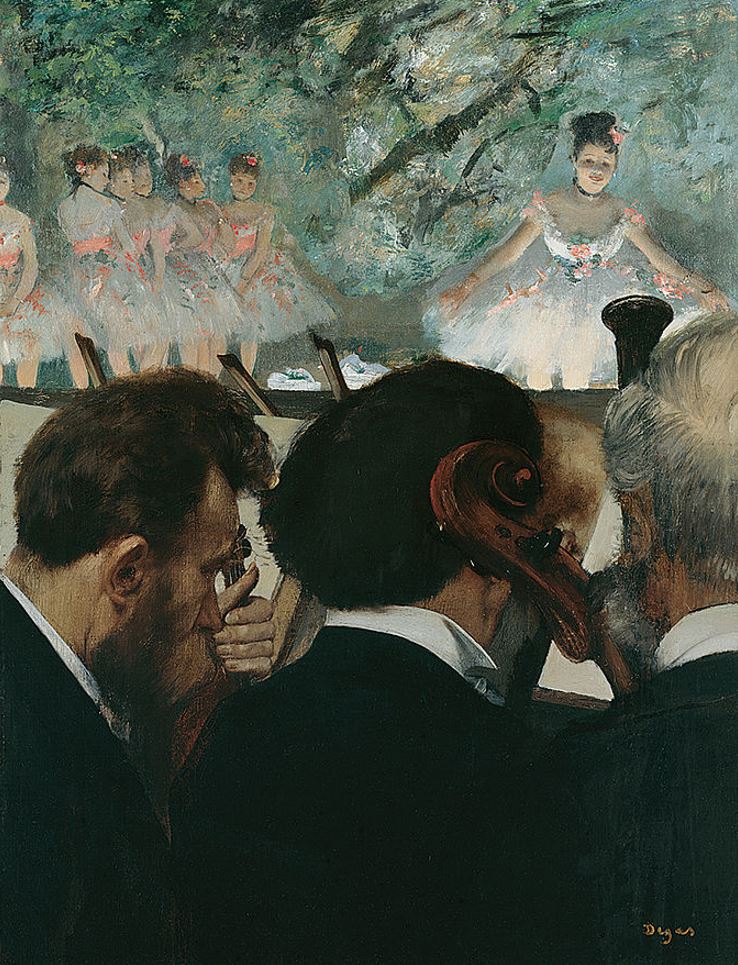The Städel Museum is officially known as the “Städelsches Kunstinstitut und Städtische Galerie” and has a history that goes back to the year 1817.
This makes it one of the oldest museums in Germany. It’s also one of the most notable museums on the so-called “Museumsufer” or museum embankment along the River Main.
The museum was named after Johann Friedrich Städel (1728–1816), a local banker and patron of the arts who bequeathed his collection and fortune to be used for its establishment.
It wasn’t until 1833 that the collection was housed in a permanent building for the first time. It was moved to its current location in the Renaissance Revival building in 1878.
The original building was seriously damaged during World War II and was rebuilt during the 1960s. It was expanded twice, once in 1990 to house the modern art collection and in 2012, a project that added 7,000 square meters (75,000 square feet) of exhibition space to the museum.
Today, the museum houses a significant collection of 3,100 paintings, 660 sculptures, and over 100,000 photographs and drawings from the Middle Ages to modern times.
In this article, you’ll discover some of the most famous paintings at the Städel Museum in Frankfurt.
1. Lucca Madonna – Jan van Eyck
- Date created: 1437
- Dimensions: 65.5 x 49.5 centimeters (25.7 x 19.4 inches)
The Lucca Madonna is a painting by Jan van Eyck (1390-1441), one of the most influential artists who emerged during the Northern Renaissance. It’s a typical painting by the Early Netherlandish master who painted several works depicting the Virgin Mary holding her infant Jesus Christ.
This painting shows Mary while she is breastfeeding her child, something that has made art historians conclude that it might depict Margaret van Eyck, the artist’s wife. Although it’s part of the Städel Museum in Frankfurt today, it was named after Charles II, Duke of Parma, and Lucca, the man who owned it during the 19th century.
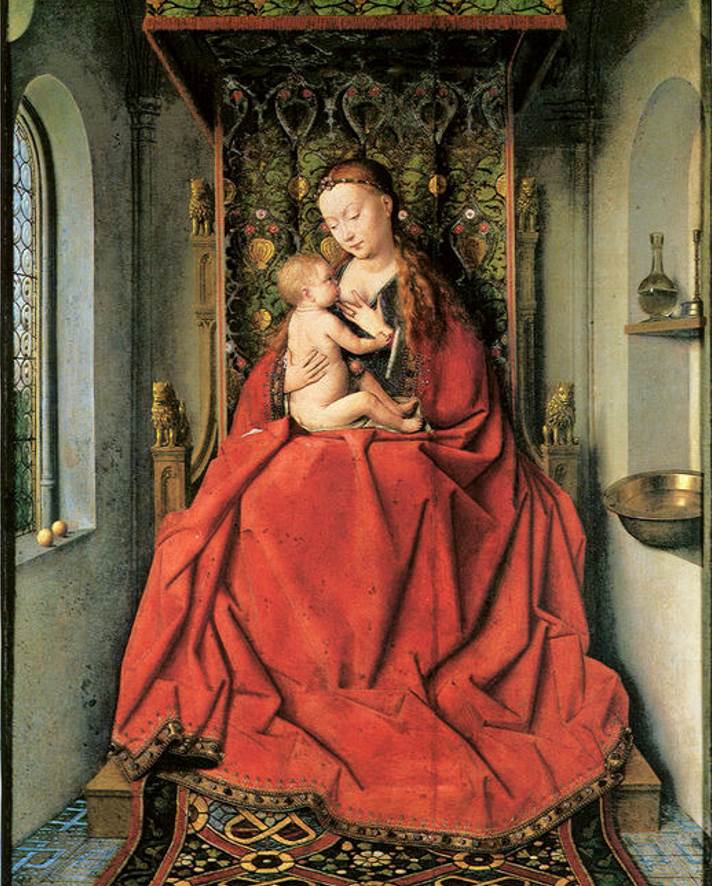
2. Medici Madonna – Rogier van der Weyden
- Date created: 1460-1464
- Dimensions: 61.7 × 46.1 centimeters (24.3 × 18.1 inches)
The Medici Madonna is a very similar painting by Rogier van der Weyden (1399-1464), the man who stepped in van Eyck’s footsteps as the leading artist in the Low Countries during the 15th century. It also depicts Mary who is breastfeeding her child while she is surrounded by 4 men.
The prominent coat of arms at the bottom of the painting leaves no doubt that the work was commissioned by the Medici family in Florence. The 4 men have been identified as St. Peter, St. John the Baptist (who is the patron saint of Florence), St. Cosmas (the protector of the House of Medici), and St. Damian.
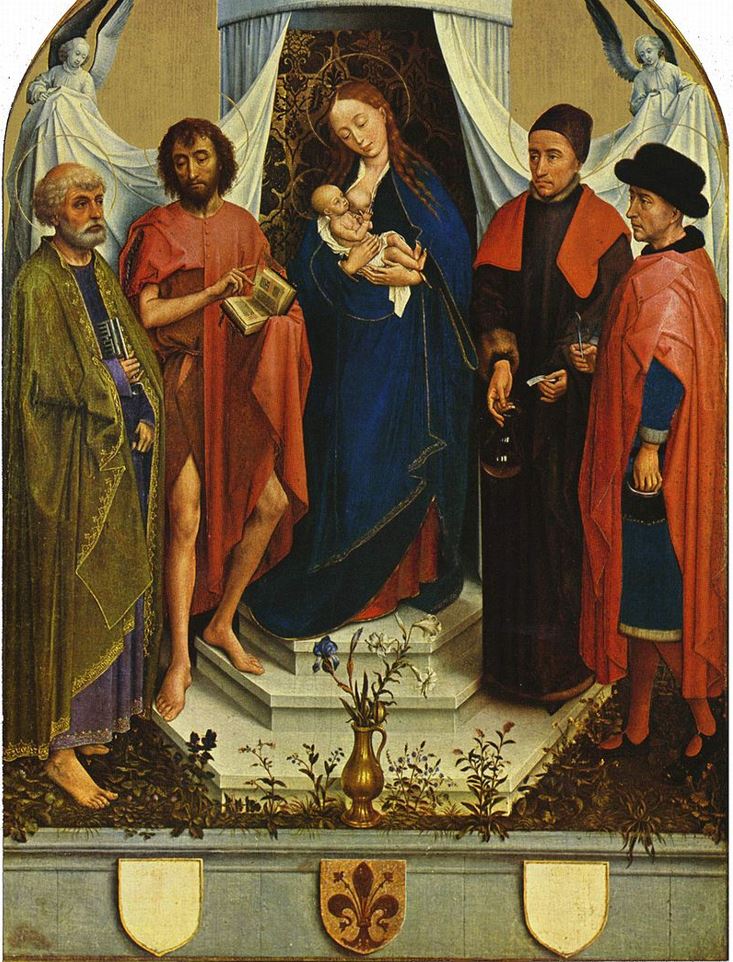
3. Ecce Homo – Hieronymus Bosch
- Date created: 1475-1485
- Dimensions: 71 × 61 centimeters (28 × 24 inches)
Ecce Homo is the title of a painting by Hieronymus Bosch (1450-1516), a man who is best known for his fantastical paintings of religious subjects. The title of the painting translates to “Behold the Man,” a famous quote spoken by the Roman Prefect Pontius Pilate when Jesus Christ was presented to the mob in Jerusalem.
Unlike many other depictions of this event, Bosch presented a very vulnerable Jesus as he is being led out of his jail cell. There’s nothing heroic about the way he carries himself before being sentenced to death by crucifixion. The painting at the Städel is the original and a copy is held at the Museum of Fine Arts in Boston.
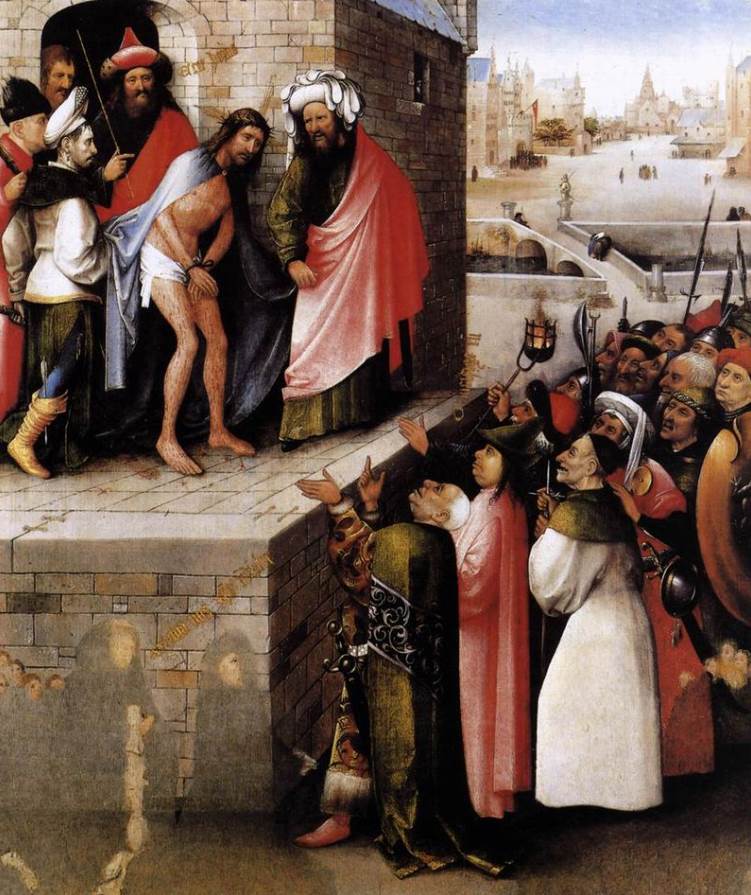
4. Portrait of a Young Woman – Sandro Botticelli
- Date created: 1480-1485
- Dimensions: 82 × 54 centimeters (32 × 21 inches)
Portrait of a Young Woman is a painting by Sandro Botticelli (1445-1510), the Italian painter, and master of the Renaissance. This work emphasizes the notion that he would have made a great comic book illustrator had he been born in the 20th century instead of the 15th.
His style didn’t evolve into the ideals of the High Renaissance but he rather went back to the idealized portrayals of important people during the Middle Ages. The identity of the sitter is uncertain but it may depict an idealized portrait of Simonetta Vespucci, a noblewoman from Genoa.
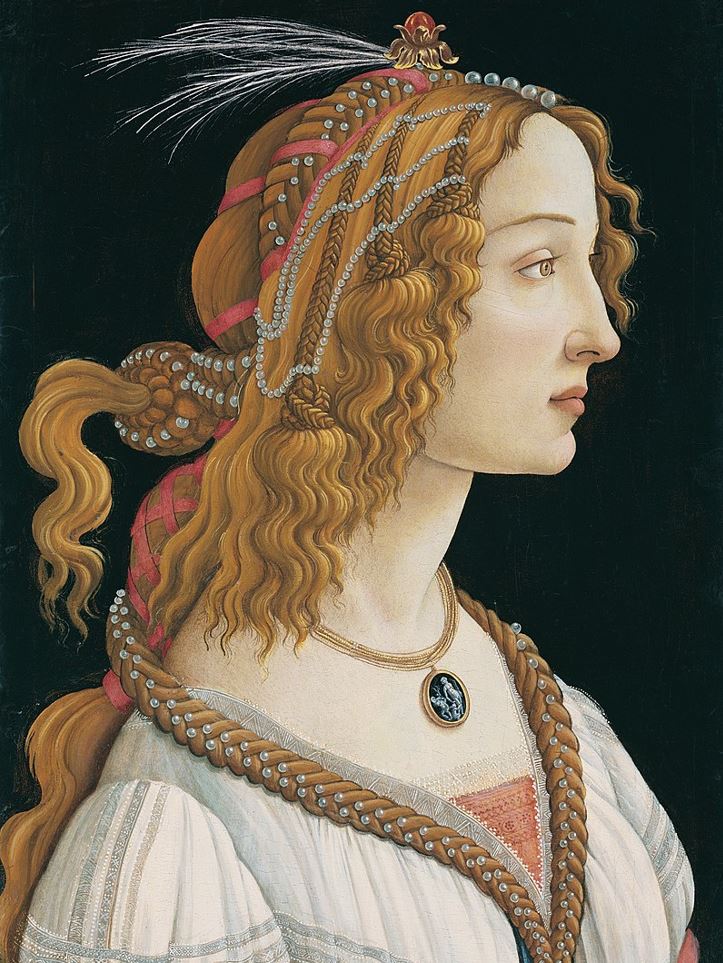
5. The Blinding of Samson – Rembrandt van Rijn
- Date created: 1636
- Dimensions: 219.3 × 305 centimeters (86.3 × 120 inches)
The Blinding of Samson is a huge but rather scary painting by Rembrandt van Rijn (1606-1669), one of the greatest exponents of the Dutch Golden Age in the 17th century. It was completed when the Dutch artist was at the height of his career, shortly after he moved to Amsterdam.
The painting is remarkable for both the fact that it was the first time in art history that this particular scene had been depicted and because it wasn’t commissioned. Rembrandt presented it as a gift to the House of Orange because he was behind on another commission, a series of paintings depicting the Passion of Christ.
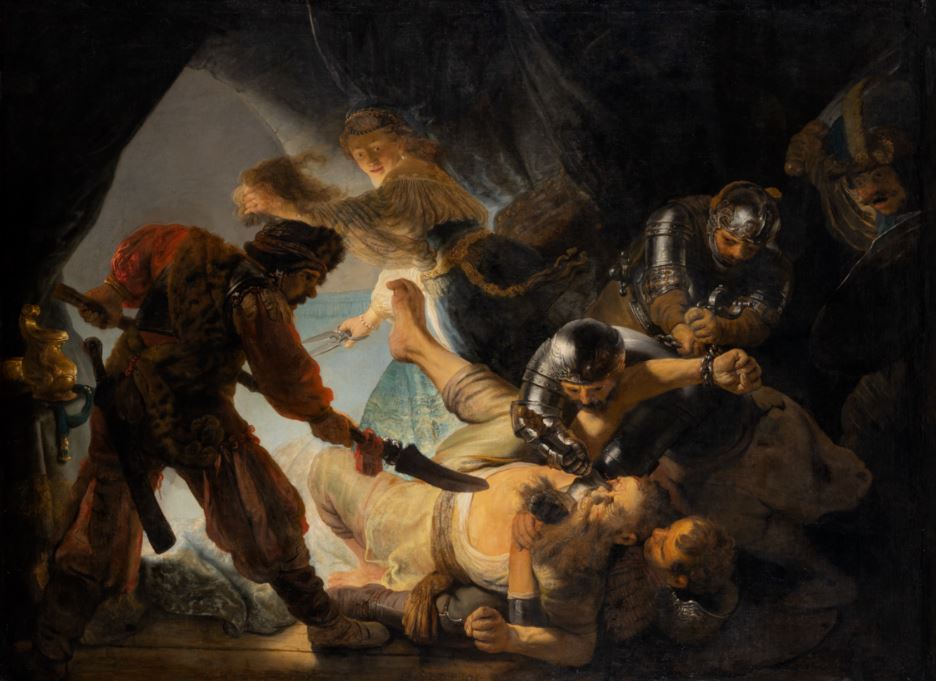
6. The Geographer – Johannes Vermeer
- Date created: 1668-1669
- Dimensions: 52 × 45.5 centimeters (20 × 17.9 inches)
The Geographer is a painting by Johannes Vermeer (1632-1675), another famous Dutch artist who mainly focused on intimate scenes in his own house. It’s considered to be a companion painting of a very similar work titled “The Astronomer” which he completed around the same time.
Not only was the canvas cut from the same cloth, but it also depicts the same man. This was possibly Antonie van Leeuwenhoek (1632-1723), a man who lived in the same city of Vermeer, Delft, and who was most likely studying at the time to become a professional surveyor.

7. Goethe in the Roman Campagna – Johann Heinrich Wilhelm Tischbein
- Date created: 1787
- Dimensions: 164 × 206 centimeters (65 × 81 inches)
Goethe in the Roman Campagna is the title of a painting by Johann Heinrich Wilhelm Tischbein (1751-1829), a Neoclassical artist from Germany. It depicts the world-famous German poet and writer Johann Wolfgang von Goethe (1749-1832) and depicts an idealized scene of his journey to Italy between 1786 and 1788.
Goethe visited Rome to study classical antiquity, a popular endeavor during the 18th century. It was in a sense a reaction to the theatrical counterpart at the time, the Baroque and Rococo movements. This is reflected in the harmonious and tranquil compositions of Neoclassical paintings such as this one.
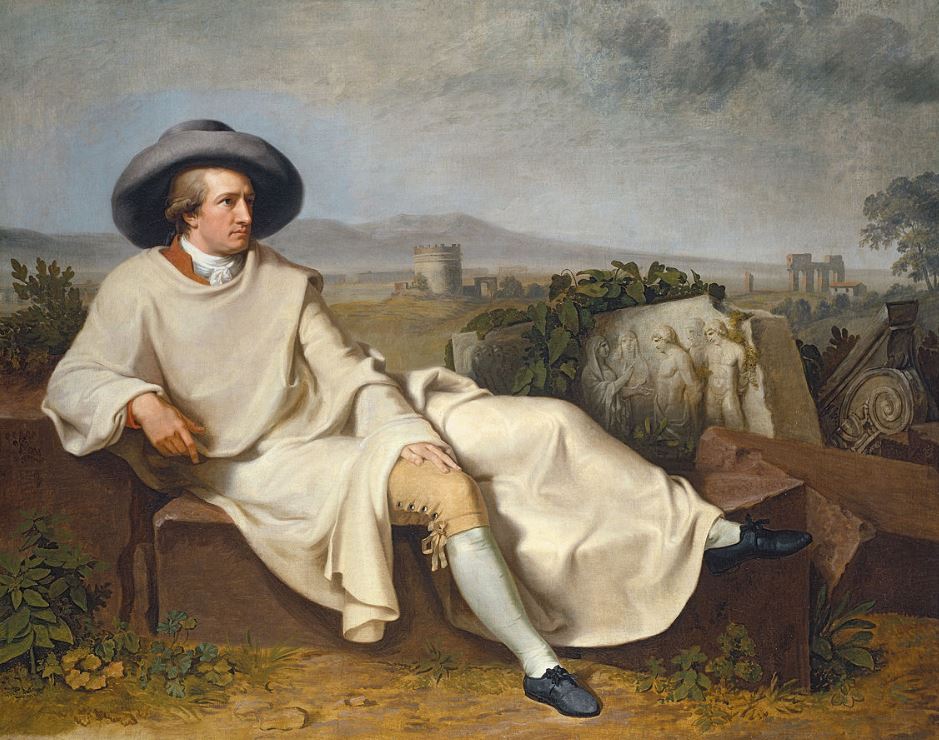
8. The Luncheon – Claude Monet
- Date created: 1868-1869
- Dimensions: 151 x 231.5 centimeters (59.44 x 91.14 inches)
The Luncheon is arguably one of the most important paintings in the oeuvre of Claude Monet (1840-1926), mainly because of what happened in 1870. It was rejected at the Paris Salon that year and it urged Monet to radically change his style. This was followed by the first Impressionist exhibition in 1874.
Although the Impressionist artist was already experimenting with painting outdoors and painting with bold and visible brushstrokes, he still left the door open for an academic career at the time. This is clear in this large work which depicts the artist’s family, a guest, and a maid while they are having lunch.
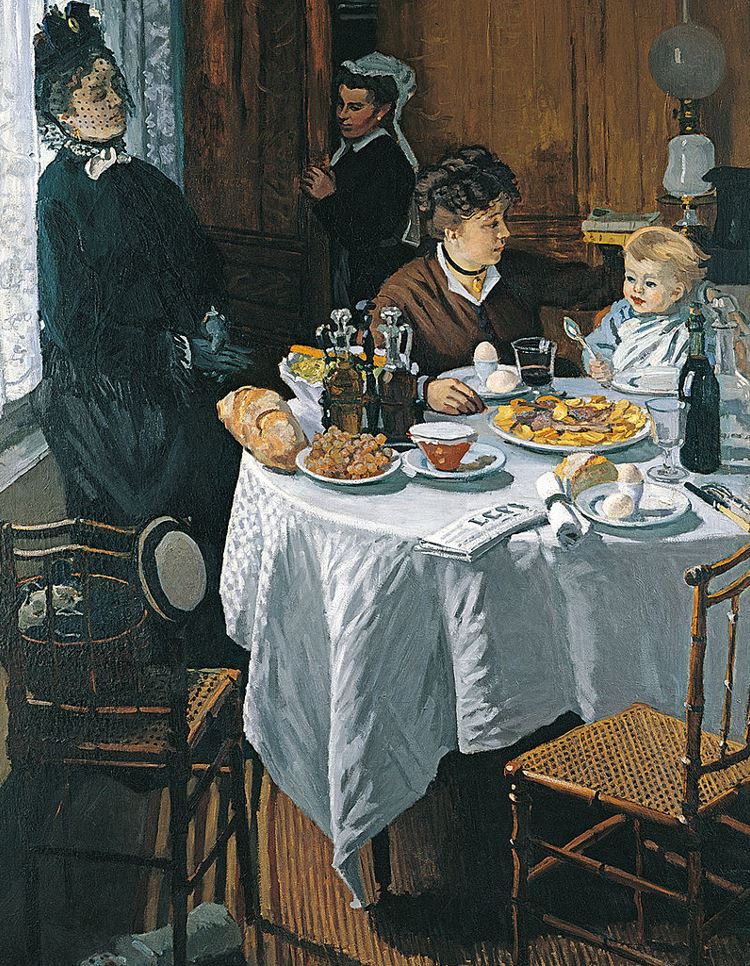
9. After the Luncheon – Pierre-Auguste Renoir
- Date created: 1879
- Dimensions: 100.5 x 81.3 centimeters (39.56 x 32 inches)
After the Luncheon is a painting by Pierre-Auguste Renoir (1841-1919), Claude Monet’s friend and another pivotal artist in the development of Impressionism in the 19th century. Unlike Monet’s painting at the Städel, this was completed at a time when the painters already earned their artistic breakthroughs in the 1870s.
It depicts a scene in a Parisian restaurant after a lavish dinner. The woman who sits down is the actress Ellen Andrée. She is enjoying her after-dinner drink and the same can be said about Renoir’s brother who is lighting a cigarette. Renoir’s favorite model at the time stands behind them and stares out of the canvas.
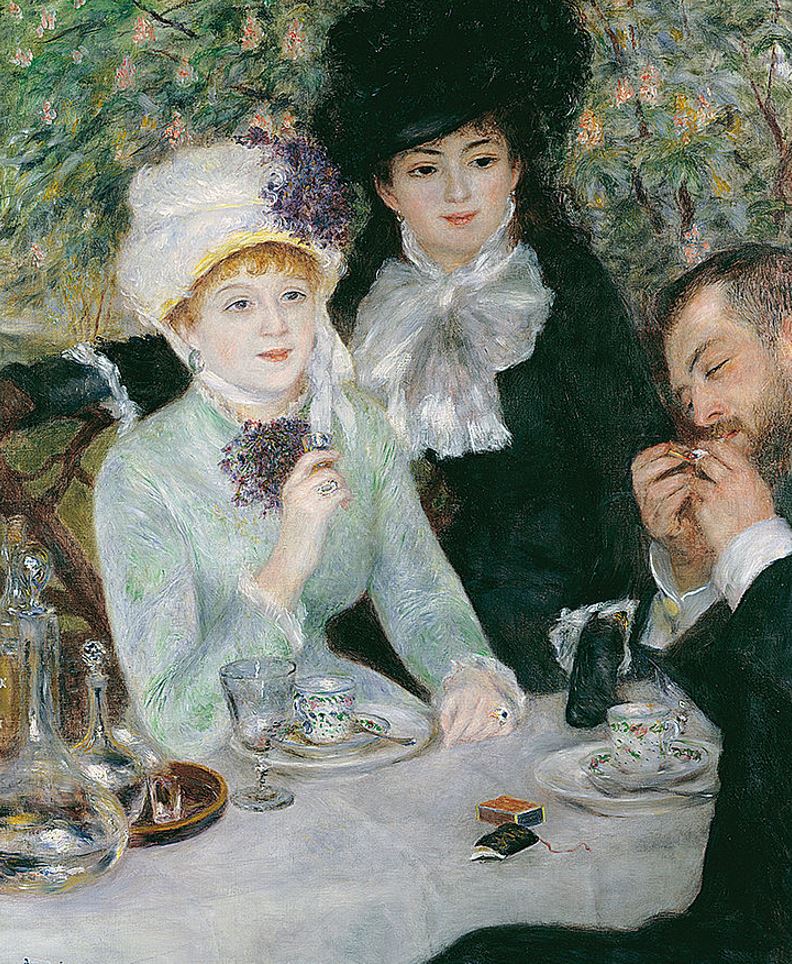
10. Musicians in the Orchestra – Edgar Degas
- Date created: 1872-1876
- Dimensions: 49 x 69 centimeters (19.29 x 27.16 inches)
Musicians in the Orchestra is a painting by Edgar Degas (1834-1917), another French artist who painted in an Impressionist style but who preferred to be called a Realism artist. It depicts the favorite subject matter of the French painter, a ballet performance that is accompanied by orchestra musicians.
The perspective of the painting is pretty remarkable, to say the least. We are viewing the scene from behind the musicians as if we are actively involved in it. Equally fascinating is the fact that Degas made several changes between 1874 and 1876. He significantly enlarged the canvas and changed the format from horizontal to vertical at that time.
